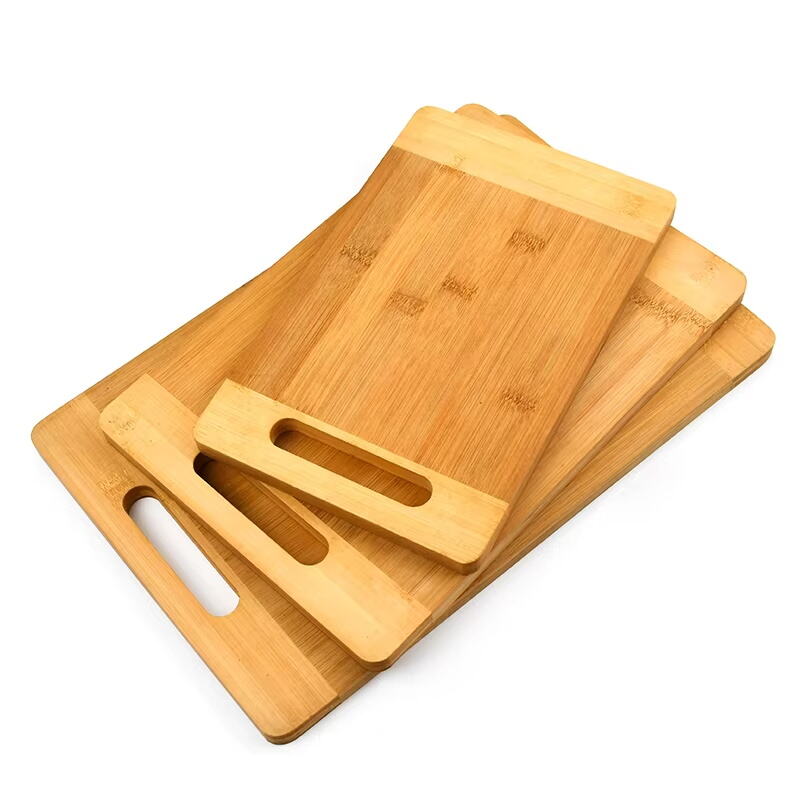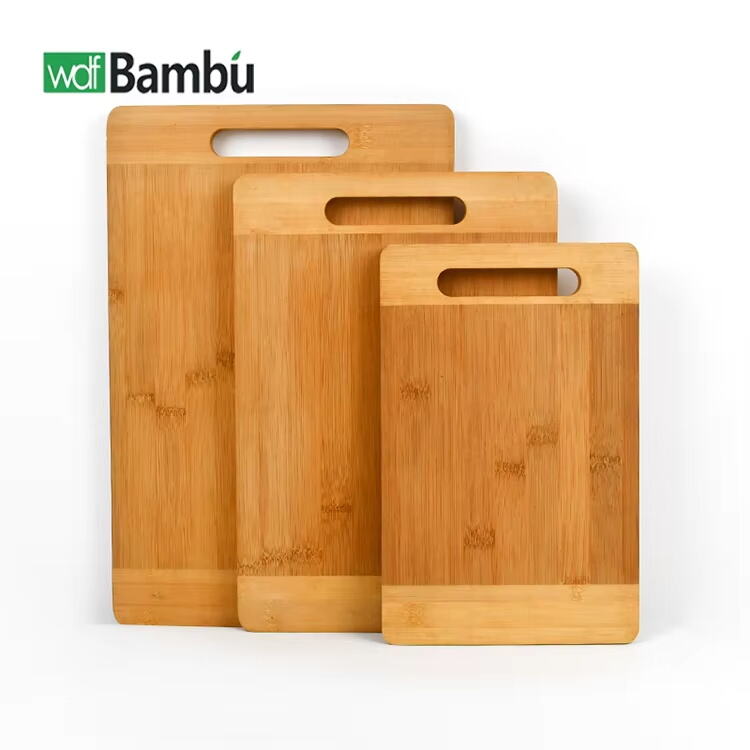Podstawowa rola desek do krojenia w nowoczesnych kuchniach
Każda kuchnia opowiada swoją historię przez używane w niej narzędzia, a w samym jej centrum znajduje się skromna, lecz niezastąpiona deska do krojenia. Wraz ze wzrostem popularności gotowania w domu, wybór między deską drewnianą a zestaw drewnianej deski do krojenia oraz alternatywami plastikowymi staje się coraz bardziej istotny. Fachowi szefowie kuchni, jak i amatorzy, wiedzą, że odpowiednia powierzchnia do krojenia wpływa nie tylko na przygotowanie posiłków, ale także na bezpieczeństwo żywności, utrzymanie noży i ogólną wydajność gotowania.
Debata na temat desek do krojenia z drewna i plastiku trwa od dziesięcioleci, a obie strony mają swoich zagorzałych zwolenników. Jednak najnowsze badania i opinie ekspertów zaczęły rzucać nowe światło na ten niezbędny w kuchni element, szczególnie podkreślając zalety tradycyjnych desek. zestaw drewnianej deski do krojenia . Od odporności na bakterie po trwałość – zalety desek drewnianych przekonują wiele osób do ponownego przeanalizowania wyboru swojego sprzętu kuchennego.

Poznaj zestawy desek do krojenia z drewna
Rodzaje materiałów i ich właściwości
Zestawy desek do krojenia z drewna obejmują zazwyczaj deski wykonane z różnych gatunków twardych drewn, z których każde ma unikalne właściwości. Jeleń, dąb i buk to popularne wybory, znane z odporności i trwałości oraz oporności na ślady po nożu. Bambus, technicznie trawa, ale często zaliczany do desek drewnianych, zyskuje na popularności dzięki swojej zrównoważonej naturze i naturalnym właściwościom przeciwbakteryjnym.
Wzór ziarna desek drewnianych występuje w trzech odmianach: ziarno końcowe, powierzchniowe i boczne. Deski z zakończonym ziarnem, choć zazwyczaj droższe, są szczególnie cenione za swoje właściwości samonaprawiające się i delikatność wobec krawędzi noży. Deski powierzchniowe oferują piękny wygląd, natomiast ziarno boczne zapewnia idealny balans między trwałością a przystępnością cenową.
Utrzymanie i długowieczność
Dobrze utrzymany blat drewniany zestaw desek do krojenia może trwać przez pokolenia, stanowiąc wartościową inwestycję dla każdej kuchni. Regularne smarowanie olejem mineralnym spożywczym lub woskiem pszczełym pomaga zapobiegać wchłanianiu wody i utrzymuje naturalną piękność drewna. W przeciwieństwie do desek plastikowych, które trzeba wymieniać po głębokim zarysowaniu, deski drewniane można odnowić poprzez lekkie szlifowanie i ponowne nasączenie olejem.
Naturalne właściwości drewna czynią je szczególnie odpornym na zużycie. Nawet przy codziennym użytkowaniu, dobrej jakości zestaw desek do krojenia drewnianych zachowa swoje właściwości, tworząc bogaty patynę, która dodaje charakteru bez utraty funkcjonalności. Taka trwałość nie tylko zapewnia lepszą opłacalność, ale także zmniejsza wpływ na środowisko poprzez rzadsze wymiany.
Korzyści płynące z drewna w porównaniu do plastiku
Wysokie właściwości bezpieczeństwa żywnościowego
Wbrew powszechnej opinii badania wykazały, że zestawy desek do krojenia drewnianych posiadają naturalne właściwości antymikrobiologiczne. Porowata struktura drewna zawiera związki, które aktywnie zwalczają bakterie, wciągając szkodliwe mikroorganizmy głęboko w drewno, gdzie nie mogą się rozmnażać i ostatecznie giną. Ten naturalny mechanizm obronny czyni deski drewniane z założenia bardziej higienicznymi niż ich odpowiedniki z plastiku.
Badania przeprowadzone na Uniwersytecie w Wisconsin wykazały, że deski do krojenia drewniane eliminują szkodliwe bakterie w ciągu kilku minut, podczas gdy plastikowe deski mogą przechowywać bakterie w zadraśnięciach po nożu nawet po dokładnym umyciu. Ta wyjątkowa właściwość drewna czyni je szczególnie odpowiednimi do pracy z surowym mięsem i innymi potencjalnie niebezpiecznymi produktami spożywczymi.
Ocena wpływu na środowisko
W epoce rosnącej świadomości ekologicznej zestawy drewnianych desek do krojenia wyróżniają się jako bardziej zrównoważony wybór. Wyprodukowane z odnawialnych zasobów, deski drewniane są biodegradowalne i mogą być wytwarzane z minimalnym wpływem na środowisko, o ile są odpowiednio pozyskiwane. Wiele producentów wykorzystuje obecnie drewno pochodzące z certyfikowanych zrównoważonych lasów, co gwarantuje minimalne zakłócenia ekologiczne.
Deski do krojenia z tworzyw sztucznych przyczyniają się natomiast do konsumpcji produktów opartych na ropie naftowej i ostatecznie trafiają na wysypiska, gdzie rozkładają się przez setki lat. W procesie produkcji desek plastikowych uwalniane są również szkodliwe chemikalia do środowiska, co czyni drewno jednoznacznym zwycięzcą z ekologicznego punktu widzenia.
Wiedza z profesjonalnej kuchni
Preferencje i rekomendacje szefów kuchni
Profesjonalni szefowie kuchni w przytłaczającej większości preferują zestawy desek do krojenia z drewna do codziennej przygotowywania posiłków. Naturalna elastyczność drewna zapewnia idealny balans między stabilnością powierzchni a ochroną krawędzi noża. Wiele szefów kuchni twierdzi, że noże zachowują swój ostrze dłużej, gdy są używane wyłącznie z deskami drewnianymi, co zmniejsza potrzebę częstej konserwacji ostrzy.
Waga i stabilność drewnianych desek sprzyjają również bezpieczniejszym i bardziej kontrolowanym ruchom podczas tnienia. Lekki efekt amortyzujący drewna zmniejsza zmęczenie rąk i nadgarstków podczas długotrwałych sesji tnienia, co czyni je pierwszym wyborem w kuchniach zawodowych, gdzie przygotowanie posiłków trwa wiele godzin.
Zastosowania w kuchniach komercyjnych
W warunkach komercyjnych zestawy drewnianych desek do tnienia potwierdzają swoją wartość dzięki wyjątkowej trwałości i łatwej konserwacji. Choć początkowa cena może być wyższa niż plastikowych alternatyw, to dłuższa trwałość i lepsze właściwości użytkowe czynią drewniane deski bardziej opłacalnymi na dłuższą metę. Wiele restauracji posiada osobne zestawy drewnianych desek do różnych rodzajów przygotowań spożywczych, zapewniając optymalną higienę i zapobiegając przenoszeniu się smaków.
Profesjonalne środowisko kuchenne podkreśla również znakomitą odporność drewna na ciepło. W przeciwieństwie do plastikowych desek, które mogą się wyginać lub topić pod wpływem gorących patelni lub składników, deski drewniane zachowują swój kształt i integralność nawet w trudnych warunkach.
Często zadawane pytania
Jak często powinienem smarować olejem mój zestaw drewnianej deski do krojenia?
W celu optymalnej konserwacji należy stosować jadalny olej mineralny lub krem do desek co 4-6 tygodni lub wtedy, gdy drewno wygląda na wyschnięte. Deski używane często lub narażone na dużą wilgoć mogą wymagać częstszej konserwacji. Prostym testem jest polanie powierzchni wodą – jeśli woda tworzy krople, deska jest dobrze nasączona; jeśli szybko wsiąka, nadszedł czas na konserwację.
Czy drewniane deski do krojenia bezpiecznie mogą obsługiwać surowe mięso?
Tak, deski do krojenia drewniane są w rzeczywistości bezpieczniejsze niż plastikowe podczas pracy z surowym mięsem dzięki swoim naturalnym właściwościom antybakteryjnym. Niemniej jednak nadal ważne jest, aby dokładnie je myć po użyciu ciepłą wodą i łagodnym mydłem, a następnie całkowicie wysuszyć. Wiele profesjonalnych kuchni wydziela konkretne deski w swoim zestawie drewnianych desek do krojenia do przygotowywania surowego mięsa.
Jaka jest najlepsza metoda czyszczenia drewnianej deski do krojenia?
Czyść drewnianą deskę do krojenia ciepłą wodą i łagodnym płynem do naczyń bezpośrednio po użyciu, delikatnie szczotkując miękką szczoteczką lub sponżem. Unikaj namaczania deski lub wrzucania jej do zmywarki. Aby zdezynfekować, przetrzyj ją octem destylowanym lub rozcieńczonym roztworem błękitu (1 łyżka na galon wody), następnie dokładnie spłucz i wysusz pionowo. Regularna konserwacja zapewni, że Twój zestaw drewnianych desek do krojenia będzie trwał wiele lat, pozostając bezpieczny i higieniczny.



 Strona Główna
Strona Główna